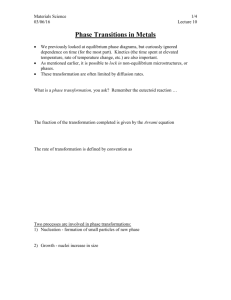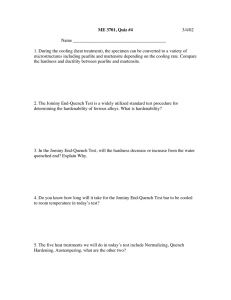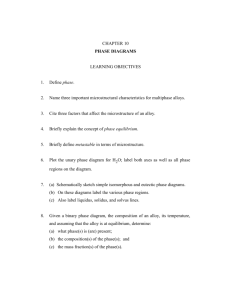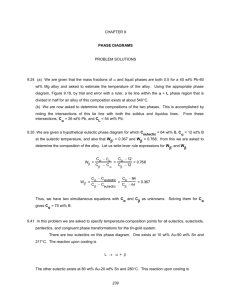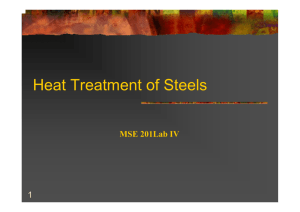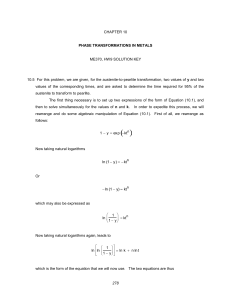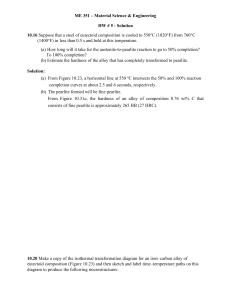TTT Diagrams
advertisement
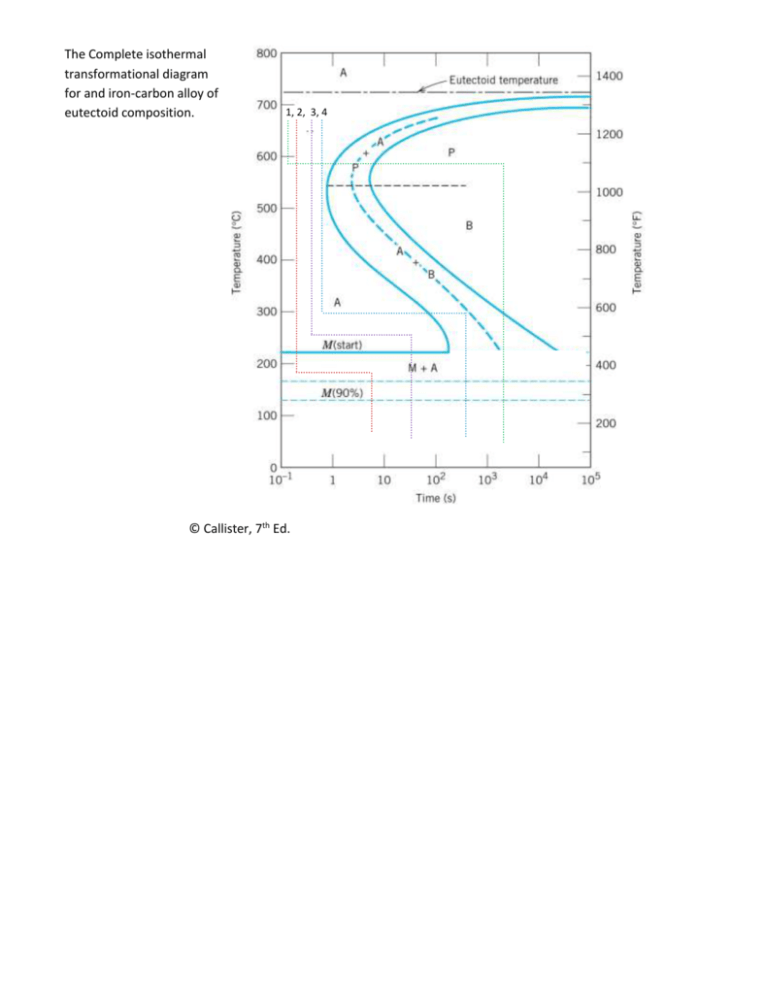
The Complete isothermal transformational diagram for and iron-carbon alloy of eutectoid composition. 1, 2, 3, 4 © Callister, 7th Ed. Group Member Names _________________________________ TTT Diagrams Pre Activity: Using your knowledge about ways to strengthen materials and your knowledge about how phases are formed when a material is cooled, discuss with your group what you would expect to happen to the strength of an alloy when it is cooled down quickly vs. slowly. Also, consider how the carbon content changes for fine pearlite, course pearlite, and spherodite and how this effects the strength of the materials. Activity I: Reading a T-T-T Diagram 1. What are the meanings of A, P, B, and M? (For each, give a description of what phases are present as well as a name.) A: P: B: M: 2. For each line of the 4 dotted lines on the T-T-T plot, describe what happens as you cool the material. (What are the micro-constituents that form?) 1. 2. 3. 4. 3. Rank the four cooling paths based on the time required to start the first phase transition. (Shortest to longest). 4. Estimate the length of time required for the total phase transition of each cooling path and rank them shortest to longest. (Note: the time is from the start to the end of transition which is not necessarily the same as start to end of cooling.) Activity II: Properties of Eutectic Iron-Carbon Alloy. 5. Draw a picture of the final microstructure for each cooling path and label your drawing as needed, e.g. label the alpha and Fe3C in the picture if you draw pearlite. 1. 3. 2. 4. 6. Rank the four material conditions based on final strength after following the different cooling paths. (Strongest to weakest) 7. Rank the four material conditions in order of decreasing ductility. 8. Below are four actual photos of microstructure. a) Match each microstructure with its name. (a) (b) (c) (d) Yield Strength b) On the graph below plot the approximate yield strength and the transformation temperatures, which can be estimated from the T-T-T diagram, for martensite, bainite, fine pearlite, and course pearlite. (Trends, not numerical accuracy, are what we want you to be considering.) Transformation Temperature Activity III: Looking Forward 9. For each of the following areas, how are metals and ceramics different? How are they similar? Mechanical Behaviors: Diffusion: Phase Diagrams: Activity IV: Looking Backward 10. In these examples, the stronger a material is the less ductile it is. However, we know that this does not hold in general for all materials. Why is it true here? (Describe and explain the atomic behavior which gives rise to these trends in macroscopic properties.)


